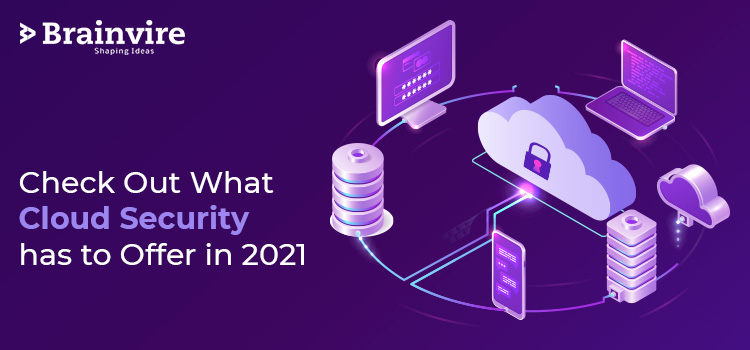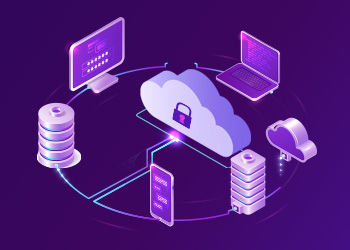
In 2020, a study from Netwrix stated that 54% of companies that use Cloud services for data storage have reported security incidents. Initially, these were minor glitches but a few major problems came to vision eventually.
Individuals share only half of their unhealthy habits when they visit their doctors. Similarly, organizations reveal only 10% of their cloud security errors.
Well, one shouldn’t boast about their bad habits. But when these habits show severe symptoms of an illness only then the truth comes out. Cloud security problems have a similar affair.
It is important to notice minor symptoms and reach out to experts who provide Microsoft Azure Cloud services to avoid major problems.
In this article, we will share two significant aspects related to Cloud Security:
- Determining the Cloud Security Capabilities in the Post-Pandemic Phase
- 4 Features That Can Control Cloud Security in 2021
Determining the Cloud Security Capabilities in the Post-Pandemic Phase
Businesses are evolving as per the post-pandemic consumer demands. The Cloud has played an integral role before as well as the post-pandemic phase.
Earlier, 88% of the enterprises used the Cloud for one or two functions. However, since the outbreak of the pandemic, companies have switched to remote work and make comprehensive use of the Cloud features and functionalities.
It’s time companies start to prepare themselves for the post-pandemic phase. This is how the Cloud can help enterprises during this phase:
Befriend DevOps
DevOps is gaining fandom across industry verticals and agility has turned out to be the emperor. The use of microservices, containers, and serverless computing is bridging the gap between operations, development, and security.
Companies that switch to the Cloud are benefited from automated processes. DevOps also facilitates a broader attack field which reduces risks for the companies.
The DevOps managing and auditing teams must check credentials and permissions to retain robust security and agility. The Cloud integration solution offers automated workflows and improves analyzing capabilities.
Reduced Efforts, Increased Efficiency
IT experts surpass multiple physical security layers with on-premise data storage. They have to go through sign-in sheets and RFID access cards to name a few to access the right server in the data center.
The Cloud offers an organized process and eliminates the unwanted layers with secure and quick access to the data remotely.
MFA (multi-factor authentication) offers automated authentication decisions for a few users on remote systems. The limited access feature ensures that the data is accessible to only a handful of reliable users.
Experts can trace down the intervention of any third-party or outsourced resource to the server.
Practicing the Use of Multi-Cloud Strategies
During the pandemic, multi-storage strategies gained a lot of popularity and organizations have started the use of multiple IaaS providers.
81% of public cloud users use either two or more providers which means that companies have unknowingly started adopting the hybrid and multi-cloud computing solution.
Over some time, this approach may increase the complexities and risk involved for access and identity management. Centralizing identity management is an ideal approach to reduce complexity. Simultaneously, you can optimize productivity and increase security.
Enterprises can also practice the PAM (Privileged Access Management) approach that concentrates on the individual request for form access. Successful implementation of this approach can uplift your success.
Companies can implement the same robust security operational norms and controls for hybrid, multi-cloud environments, and on-premises. If a company concentrates on automation and security today, then they will have far better Cloud capabilities in the future as compared to their competition.
During the implementation of the Cloud strategy, you can examine risks and perks associated with your enterprise. This information can prepare you for the future and take the necessary actions to attain success.
Four Features That Can Control Cloud Security in 2021
Cloud computing services will provide you a series of features based on your business requirements. However, it is important to include features that can provide you sturdy control on Cloud security.
Discussed here are a few features that can provide you the much-required control on Cloud security:
Native Integration into Security and Cloud Management System
Cloud computing runs on a shared-responsibility model. This means that certain security settings are controlled by the public Cloud vendor while others by the customer.
It is important to have a crisp understanding of your Cloud controls. You need in-sync coordination between the Cloud environment and CWP solution to gain proper visibility.
You can also make optimal use of API-level integration into tools such as:
- VPC Flow logs
- Amazon Inspector
- GuardDuty for AWS
- Security Center for Azure
- Flow Drivers for Google Cloud Platform
SaaS customers can integrate Cloud access security broker solutions with SaaS service to recognize configuration issues and risks about the existing SaaS platform.
Centralized Visibility
To ensure that you have comprehensive control on Cloud security you need centralized visibility of:
- Configuration settings
- Security policies
- User activities
Strong access to these can help your team to trace threats or any vulnerabilities due to the absence of anomalous activity and misconfiguration.
Each Cloud has a different configuration setting and developers have the power to select these settings. A skilled developer has sufficient security expertise and can choose the best for you.
Make sure that you include the following security tools for lucrative workload protection:
- Frequent configuration assessments and monitoring
- Traffic analysis
- Scrutinize data stored in the Cloud for important content
- Notifications for configuration issues
- Suggestions to enhance vulnerable areas of the Cloud environment
- Recognize compliance issues
Automated Security
There is a gap between the existing and required cybersecurity skills. In the future, cybersecurity professionals will be in high demand. The traditional DevOps teams need to upgrade to advanced skills to manage the variety of threats effortlessly.
Until the industry has sufficient skilled force to bridge the demand and supply gap, there is a need to automate security functions. A skilled team of developers can suggest the right plugins that provide more visibility to administrators into:
- Enabling automation
- Multi-vendor ecosystems
- Organized management
When a system upgrades or undergoes changes, the tech team doesn’t necessarily have to update security policies but simply evolve.
Businesses can also use security configuration scripts to automate security operations.
Threat Intelligence Notifications
Your Cloud environment is heavily influenced by vendor activities and multiple providers on the security platform.
A complex environment is more susceptible to threats. Your business can claim maximum security when you opt for a single comprehensive Cloud security solution. A single solution that can handle all Cloud services within your large organization.
A good Cloud solution comprises innovative threat intelligence notifications; some also include deep intelligence of local as well as global security events.
It is important to choose a Cloud solution provider that can help accumulate data across varied deployed sensors.
Learn more about cutting-edge Cloud security control features from our experts.
Related Articles
-
Everything You Need To Know About Web-Scale-IT For A Cloud Development
‘Web-Scale IT’ is the talk of the town in the IT world. The reason behind its emergence is the initiatives taken by tech giants Facebook, Google, Amazon and so on.
-
Blockchain and Decentralization: How Does It Relate?
Welcome to the world of infinite possibilities. We are talking about ‘THE NEXT BIG THING’ in the world, Blockchain. You might have read numerous write-ups about Blockchain, what is Blockchain,
-
Do You Need Reasons To Migrate Your Business To Cloud?
Migrating your data to cloud platform assures that it is in an environment that is scalable, trustworthy and highly accessible but these shouldn’t be the only factors to drive your



